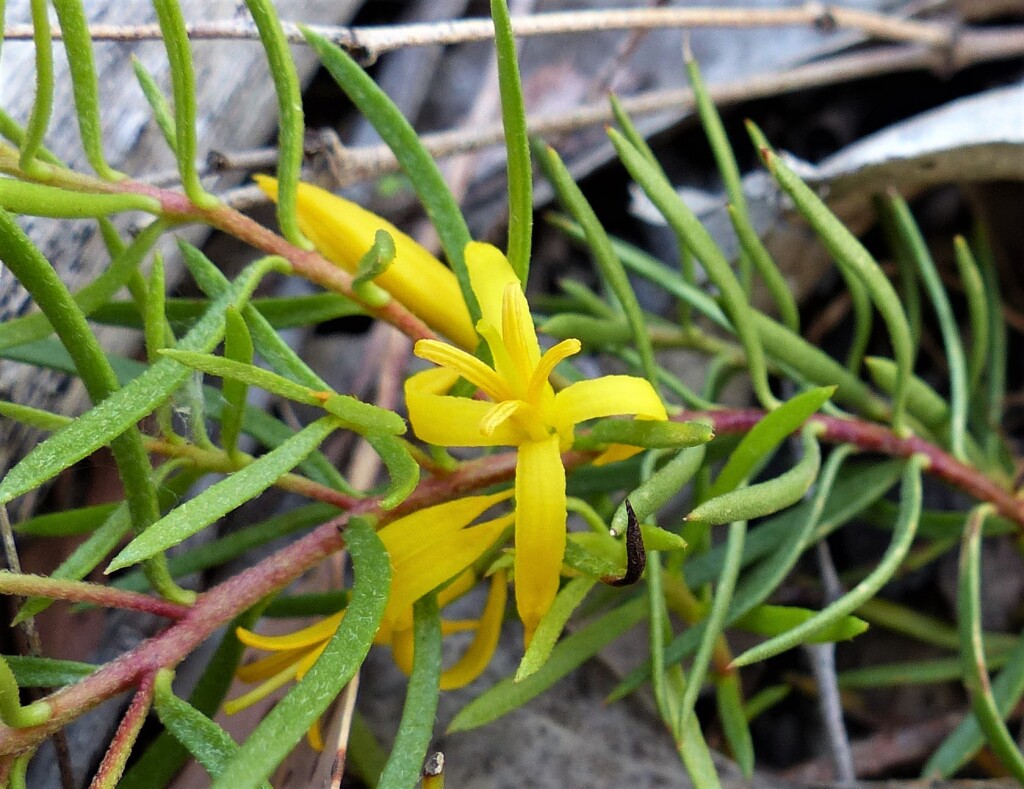Persoonia chamaepeuce
Lhotsky ex Meisn. Dwarf GeebungProstrate or decumbent subshrub; branches spreading to c. 1 m, sometimes rising to c. 30 cm, young branches sparsely hairy to glabrous. Leaves alternate or irregularly whorled, linear, 8–25 mm long, 1–2 mm wide, curved or straight, somewhat concave above, spreading at c. right-angles to stems, bright green, smooth, usually glabrous. Flowers solitary, mostly in leaf-axils; pedicels 3–6 mm long, glabrous, more or less erect to recurved. Tepals 9–13 mm long, caudate, glabrous, terminal spine to c. 1 mm long; anthers yellow; ovary glabrous. Drupe ovoid, yellow-green, to c. 10 mm long, c. 6 mm wide. Flowers Dec.–Mar.
Wim, VVP, VRiv, GipP, OtP, Gold, CVU, GGr, NIS, EGL, EGU, HSF, HNF, MonT, HFE, VAlp. Also NSW, ACT. Widespread and often locally common, mainly in montane to subalpine forests and woodlands.
Apparent hybrids with P. confertiflora have been observed near the Moroka River Gorge and at Brumby Point on the Nunniong Plateau.
Jeanes, J.A. (1996). Proteaceae. In: Walsh, N.G.; Entwisle, T.J., Flora of Victoria Vol. 3, Dicotyledons Winteraceae to Myrtaceae, pp. 830–887. Inkata Press, Melbourne.
 Spinning
Spinning

